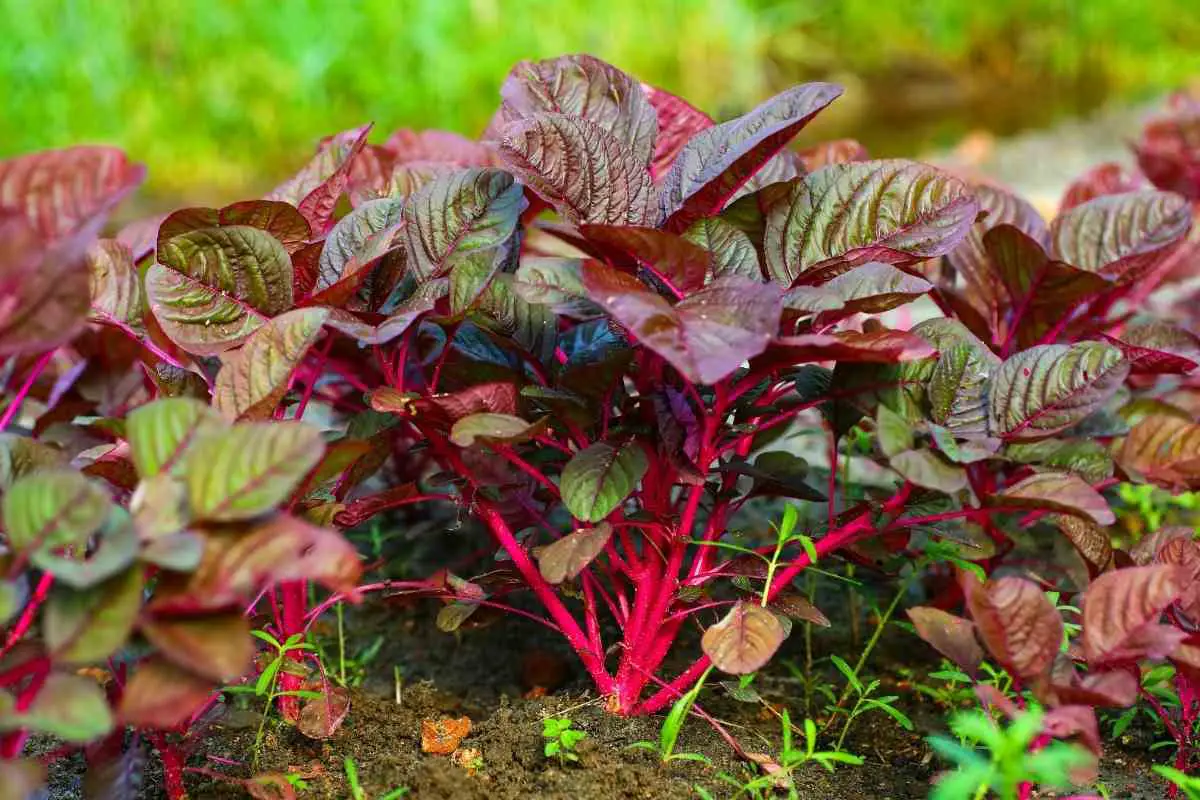Red spinach, also known as amaranthus dubius, is bursting with vitamins and is a key kitchen ingredient.
While you could just purchase it from your local grocery store, it’s so much more rewarding to grow this vegetable yourself at home.
The good news is that you don’t need any special equipment and you can grow red spinach either from seed or from a young plant without much hassle.
In This Guide – We’ll give you all the information you need to know to grow red spinach and enjoy the tasty nutritional benefits it has to offer.
What Is Red Spinach?
Red spinach, funnily enough, doesn’t only come in red varieties; there are green versions of amaranthus dubious.
These plants have slender branching stems which grow upwards and are covered in short hairs. The leaves sit in a spiral arrangement.
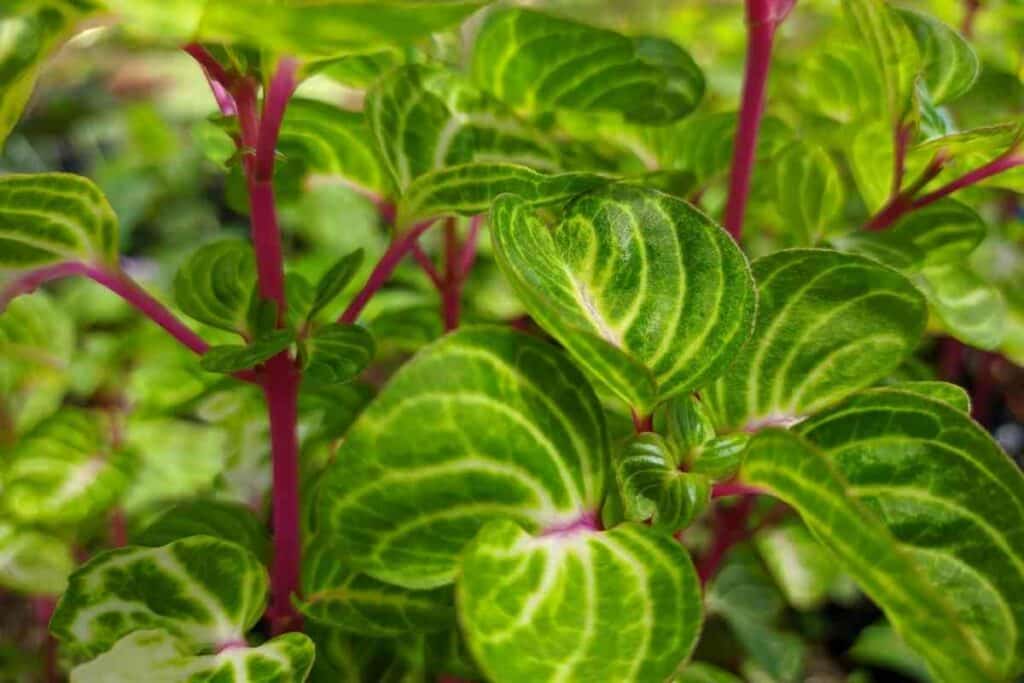
In some areas, mainly tropical regions, the red spinach plant will flower.
Although this may also be common in sub-tropical regions in the right conditions.
In the wild, you’ll often find red spinach growing in wastelands and undisturbed areas.
As well as being an excellent food source, red spinach is also hailed for its medicinal properties.
Let’s Hear About The Benefits
One of the main reasons that so many people are keen to include red spinach in their diet is because of its nutritional value.
These leaves work well to ease conditions like constipation and fever and are also high in iron so are great for people suffering from anemia.
It’s also thought that red spinach, as well as other leafy vegetables, is beneficial for lactating mothers.
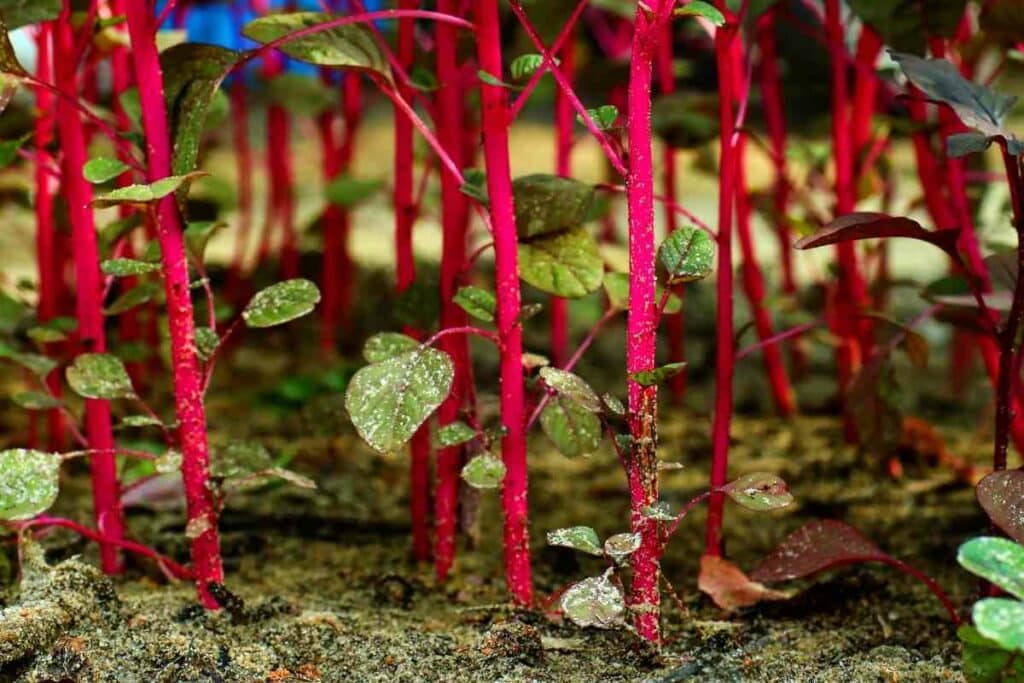
Not only are the leaves packed with iron but they’re also high in fiber and protein.
It’s not only the leaves that can be eaten; the seeds are also nutritionally beneficial to humans and while they are slightly difficult to eat, they’re often ground down into a powder.
This powder is filled with antioxidants which is great for removing toxins from the system.
On Top of This – It’s thought that red spinach is an anti-inflammatory that can reduce inflammation and protect against injury.
If you’re keen to get cooking with red spinach then it’s also good news.
The leaves are really easy to cook and can be severed in under ten minutes so it’s great for a quick dinner.
How To Grow Red Spinach
Most people will grow red spinach from seed and this isn’t difficult to do as long as you stick to the following steps.
- Start by soaking the seeds in compost tea as this will speed up germination. Ideally, you’ll need to soak them for around thirty minutes.
- Now take some humus-rich soil and spread this over the topsoil in your garden. It is also possible to grow the spinach in pots, if you prefer but since it is pretty hardy, the seeds will do well in the ground.
- Use a shovel to work the soil into the top eight inches.
- You’ll generally want to plant the seeds around February as these plants need a good amount of cool weather if they’re going to do well.
- You’ll need to use a pencil or a chopstick which you’ll insert into the soil by about half an inch. This is where you will place your seeds so make as many holes as you have seeds. Make sure to leave at least a one inch gap between holes.
- When you’re ready, place each seed into its own hole and recover with soil.
- Make sure that you provide plenty of water for the seeds. Rather than pouring this on with a watering can, it’s better to use a mister which will ensure hydration without disturbing the seeds.
Soil
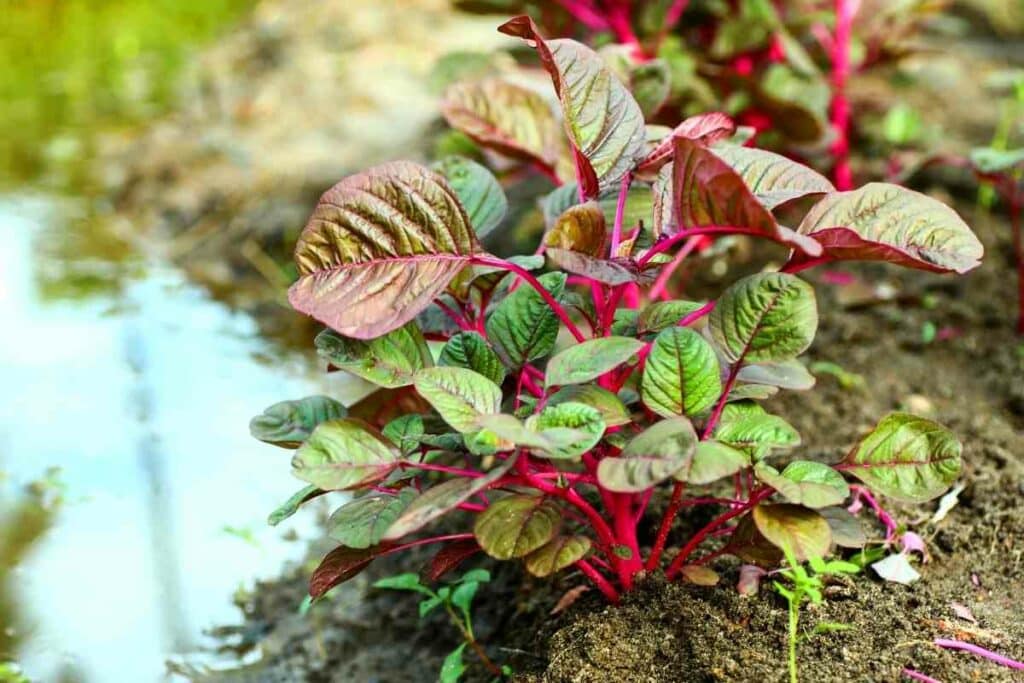
You will need to choose a good quality soil to mix in with your topsoil.
It should be rich in organic matter and it’s essential that you use a well-draining soil.
If you are growing in a pot then make sure to mix potting soil with coco peat and vermiculite compost for the best results.
Light
When growing red spinach, you will need to ensure that the plants get a lot of direct sunlight each day.
These plants do not tolerate shade well so put them in a position where they’ll get at least six to eight hours of full sunlight every day.
Temperature
Red spinach is quite hardy so you won’t need to worry too much about temperature.
However, if you want it to really thrive then plant in a location where the daytime temperatures are between 64 degrees Fahrenheit and 89 degrees Fahrenheit.
That said, red spinach can grow well in temperatures that far exceed both of these with 44 degrees Fahrenheit being the lowest it can realistically take and 96 degrees Fahrenheit the highest.
Watering
As we have already mentioned, you will need to provide your red spinach with well-draining soil.
A good flow of water that doesn’t clog up the soil will ensure the roots aren’t drowned. Once the seeds have established, you won’t need to water the plants too much.
Generally Speaking – You’ll want to make sure that you check the soil regularly and only water when the top layer is dry.
This will prevent root rot. The soil should remain moist but should never be soggy.
Feeding
Taking care of red spinach isn’t difficult, especially when it comes to fertilizing your plants.
You will only need to add fertilizer once or twice during the growing season.
Make sure that the ingredients are well balanced and apply according to the manufacturer’s instructions.
Diseases And Pests
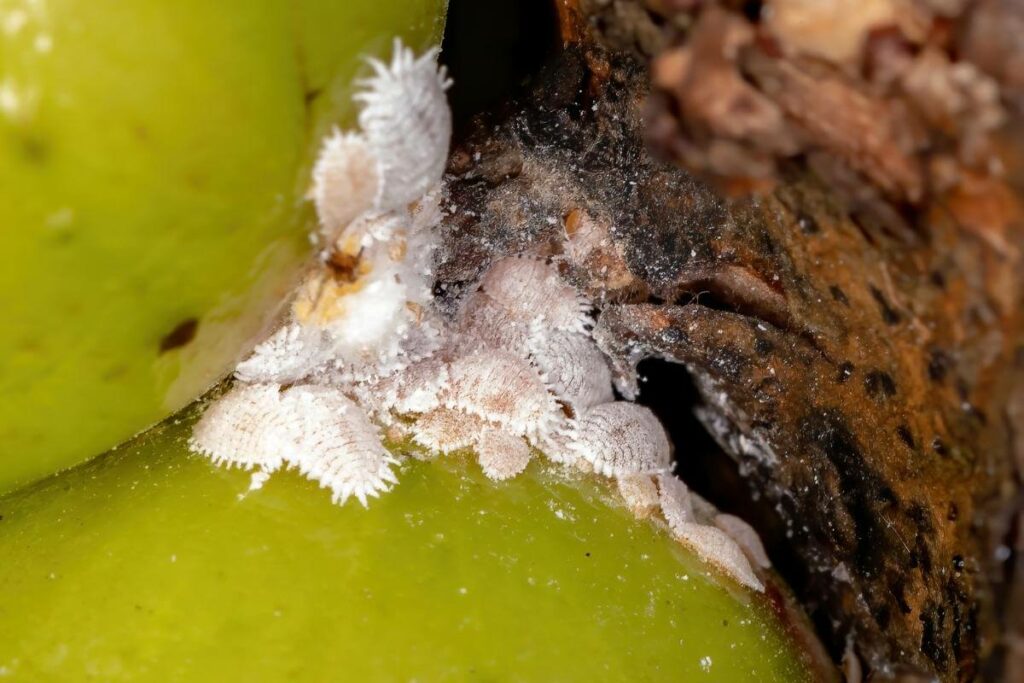
One of the great things about red spinach is that it’s unlikely to suffer from any real problems with disease.
That said, the plant may be susceptible to attacks from:
You want to avoid using chemical pesticides if you’re going to eat the plants as even after careful washing, it’s possible for some residue to be left behind.
Instead, you should opt for natural treatments such as blasting the pests off with water or removing them by hand.
This is more time-consuming but it is much more precise and safer when it comes to eating.
Harvesting Your Red Spinach
As we are learning, taking care of red spinach is pretty much a breeze.
And things don’t get any more difficult when it’s time to harvest. It’ll likely be the leaves that you want to get your hands on and all you’ll need to do is pick them from the plant.
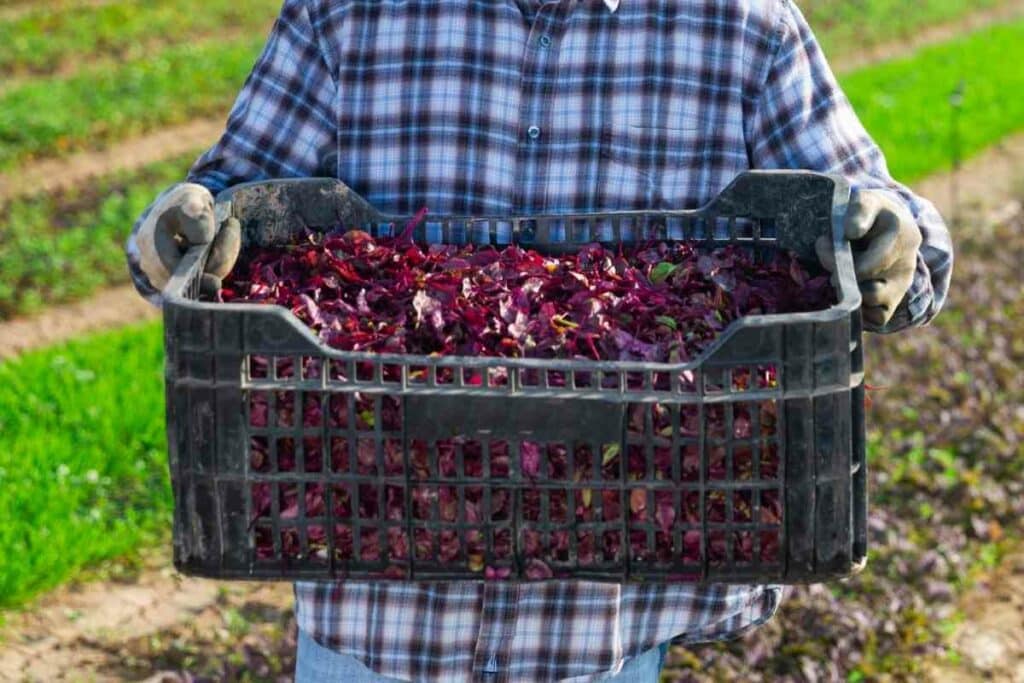
You can then use them in salads while they’re still young.
If you’re harvesting older leaves then these are generally better once they’re cooked and make a nice change from other types of spinach.
Even Better – What’s great is that you won’t have to wait around to harvest your plants. It can take as little as 20 to 30 days from when you plant the seed to the leaves being ready to harvest.
If you would like to harvest the seeds to plant then you’ll usually need to wait around three months from the time you initially planted.
This brings you to mid to late summer but this will depend on the local climate.
You will know that the seeds are ready to harvest when you notice them falling from the flowers.
You can gently shake the flower head and if the seeds fall, they’re good to go.
What About Malabar Spinach?
It’s worth pointing out that a lot of people confuse red spinach with an Indian variety known as malabar spinach.
These plants prefer to grow in moist lowlands and do very well in warmer climates.
The leaves do have the dark green hue associated with regular spinach but the stems have a lovely red wine color.

Where red spinach and many other varieties can thrive in cooler temperatures, malabar spinach won’t do as well.
One thing it certainly cannot handle is frost.
That said, it is still possible to grow it in the USA if you’re in the right region. You’ll also need to make sure that the conditions are right.
Malabar spinach likes a soil pH between 6.5 and 6.8 and will grow best when placed in partial shade.
Since this is a climbing plant, you will need to provide a trellis where you’ll be able to grow two plants at once.
Conclusion
Red spinach is super easy to grow so is a great choice for beginner gardeners who want an edible plant that’s packed with nutrition.
You’ll need to plant the seeds well before spring as they appreciate a cool spell during germination.
Make sure to provide a steady flow of water for your red spinach and feed it with a well balanced fertilizer.
Providing proper care will ensure that you have ready to harvest leaves in as little as 20 to 30 days after planting!
